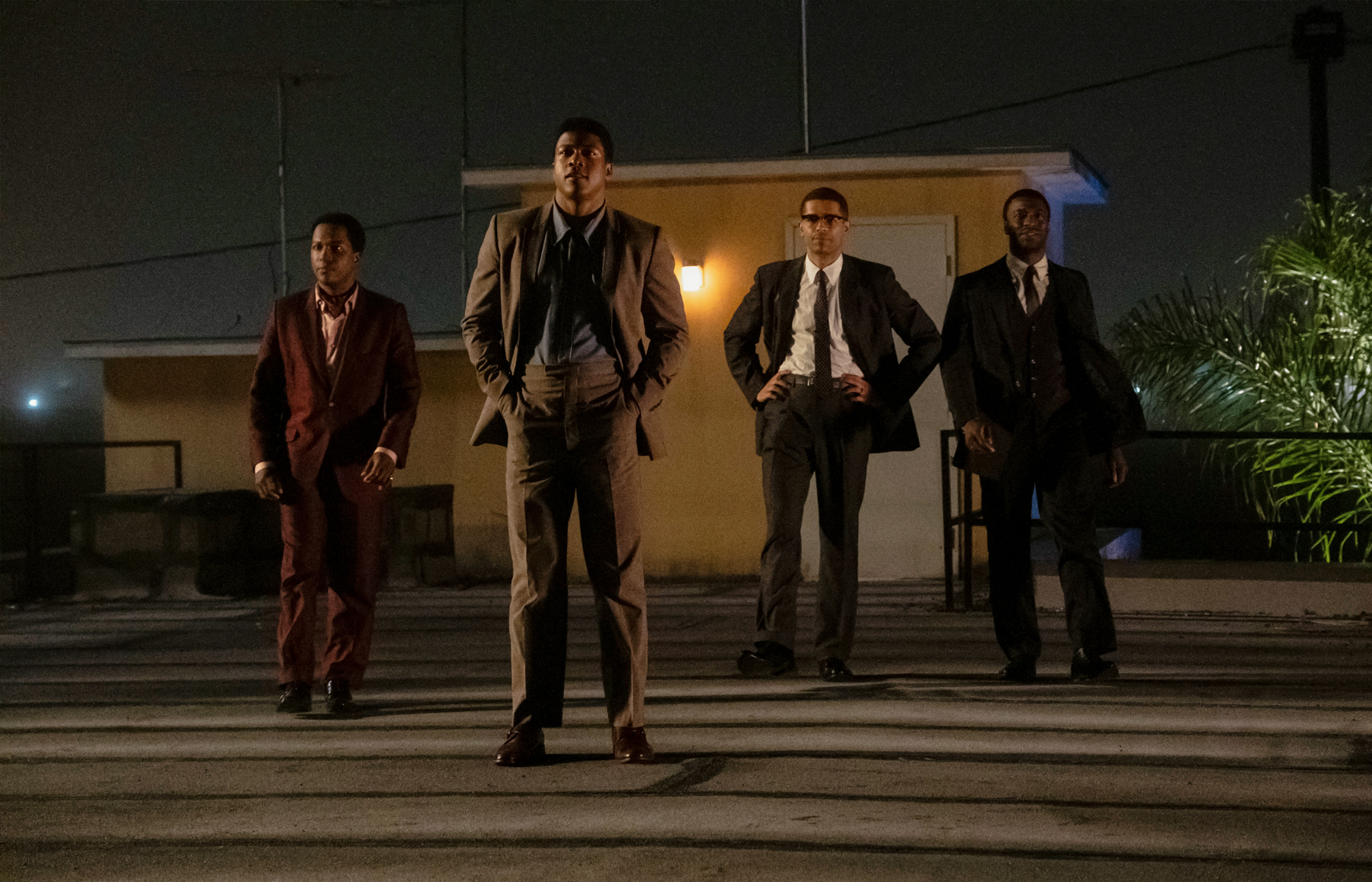Tami Reiker, ASC, helps Director/Producer Regina King take One Night in Miami from stage to screen
by Valentina Valentini / Photos by Patti Perret / Amazon Studios
In 1964, Cassius Clay – soon to be Muhammad Ali – defeated heavyweight champion Sonny Liston at the Miami Convention Hall. After the event, Clay spent the night celebrating with three close friends. One Night in Miami centers around the imagined dialogue of these four iconic Black men: Clay (Eli Goree), Malcolm X (Kingsley Ben-Adir), Sam Cooke (Leslie Odom Jr.), and Jim Brown (Aldis Hodge). Based on the award-winning play of the same name written byKemp Powers (who also penned the screenplay), the film adaptation of One Night in Miami is the feature directorial debut of actor and producer Regina King, who boldly states: “The fact that it’s a] conversation for three-quarters of the film was not a deterrent. It was a welcome challenge.”
Director of Photography Tami Reiker, ASC, whose past work includes The Old Guard, High Art, Beyond the Lights, and Pieces of April (two of which were Sundance premieres), is also the only woman yet to win a competition-category ASC award for her work on Carnivàle. Reiker says she also was eager for the challenge of visually adapting the talky source material.
“The bookends in the script are incredible,” Reiker shares. “The fight where Cooper knocks out Clay and then the celebration in the diner after Clay wins the fight against Liston. We knew how we were going to shoot those scenes. What we had to figure out was how to shoot inside one motel room, with very long takes, for most of the film.”
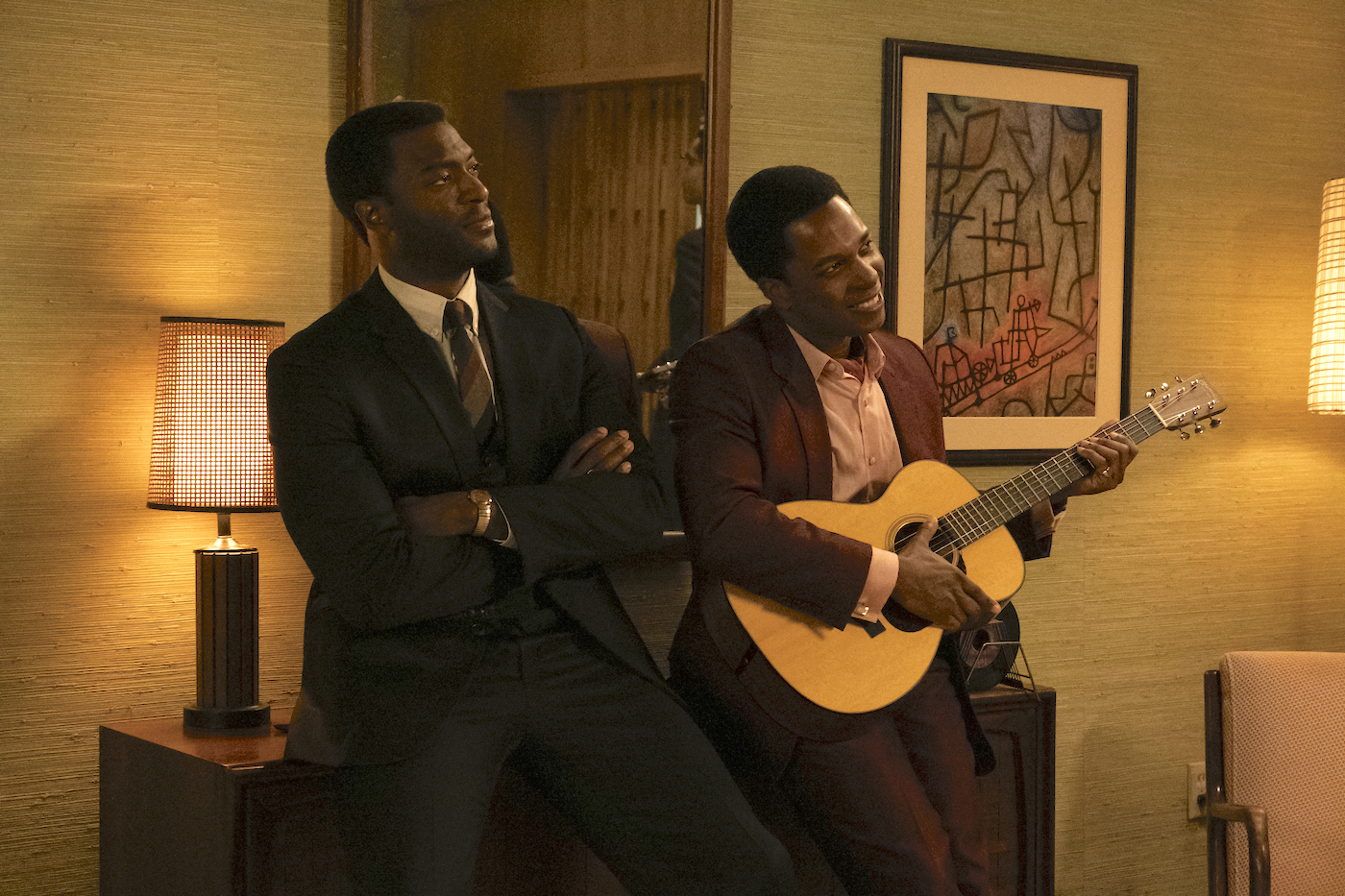
Viewers are inside The Hampton House, a historic Miami motel still in operation today, for more than half of the film’s 108-minute run-time. The story serves up weighty, emotional conversations as the quartet discuss their struggles against the backdrop of the Civil Rights Movement and cultural upheaval of 1960s America. Reiker took an organic approach to let these scenes play-out in real time.
“When you see 15 pages of dialogue without any action,” she continues, “it can feel daunting. It was amazing, fantastic dialogue, but it’s still wall-to-wall. Regina and I had to figure out how to authentically cover these scenes to fully immerse the audience, so they felt like active members of the conversation.”
One early decision was to shoot large-format with Alexa 65 in a 2:39 aspect ratio. The depth and detail of shooting 6K would allow King and Reiker to strategically place the actors in the frame and keep shifting focus between them, as King wanted to avoid static shots. “I feel like we’re such colorful people,” the director describes. “While this is a period piece, I wanted it to feel visually vibrant to match [that]. Through all we’ve been up against, we’re so resilient – we still manage to sing, dance, smile, and influence culture [just by] being. So, I wanted to keep the energy, the vitality in that room, but I never wanted the camera to be a distraction. No big sweeping movements or anything. That’s not what this piece says to me.”
Reiker’s solution was to keep both ALEXA 65s on jib arms, operated manually and not on hotheads, to let A-Camera Operator Chad Chamberlain, SOC, and B-Camera Operator Austin Alward maintain control. “I used to do this a lot,” observes Reiker, who – save for the two fight scenes and a scene on top of the motel roof, all of which were handheld – employed the ALEXAs on the manually operated arms.
“It was my favorite way to operate because it’s underslung on a Lambda head, so you’re not having to tell the dolly grip to move back or forward,” she continues. “You have a four- or five-foot arch, and you can go from the ground to nine feet in the air while floating and following the talent, creating moves organically with what’s happening in front of you, as opposed to a rehearsed dolly move.”
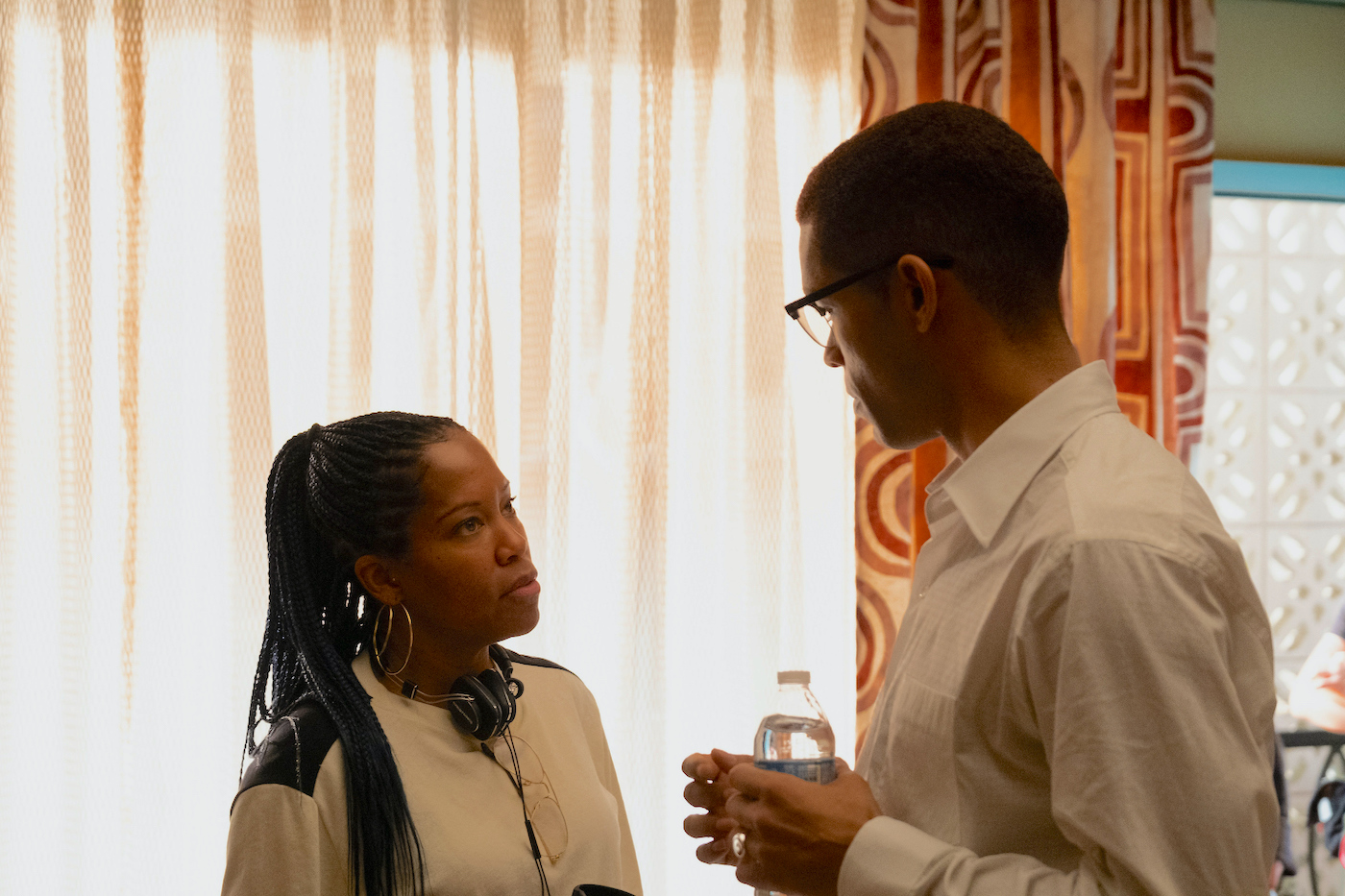
Chamberlain, whose recent credits include Bill & Ted Face the Music and Project Power, remembers talking with Tami about the bulk of the film being shot on a jib arm and assuming he’d be outside the room operating a remote head.
“But Tami always sees ten steps ahead,” he smiles. “The Lambda head was the right choice here – being in the room with the actors and having the ability to move the jib and head mechanically, while physically challenging, was freeing in many ways.”
A big key to Reiker’s approach was Dolly Grip Wayne Sharp, who was fully in sync with the operator to react and move in instinctual ways. Chamberlain was also on a track, which gave him and Sharp the flexibility to move in and around the characters throughout the long stretches of dialogue. A-Camera 1st AC Sarah Brandes also played a vital role. Chamberlain says Brandes “allowed us to go for creative choices that would evolve mid-scene, particularly during the roof and boxing scenes, where we were no longer anchored to anything.”
Brandes, who has worked with Reiker for 14 years, first as her loader, then as 2nd AC, and now as focus puller, says the beauty in her work comes from finding the beauty in the moment. “And that’s kind of the point of the build with the dolly, mini jib arm, Lambda head being underslung,” Brandes notes. “It provides this floating feel that allows you to happen upon moments.”
“The goal was to try to create a continuous omniscient movement nearly the entire film,” Chamberlain adds. “Even as the characters would pause, we would attempt small, sometimes imperceptible and uncomfortable movements. This perpetual motion made our static frames that much more powerful. That was another brilliant decision by Tami that went against my instincts, and was, once again, the perfect choice for this project.”
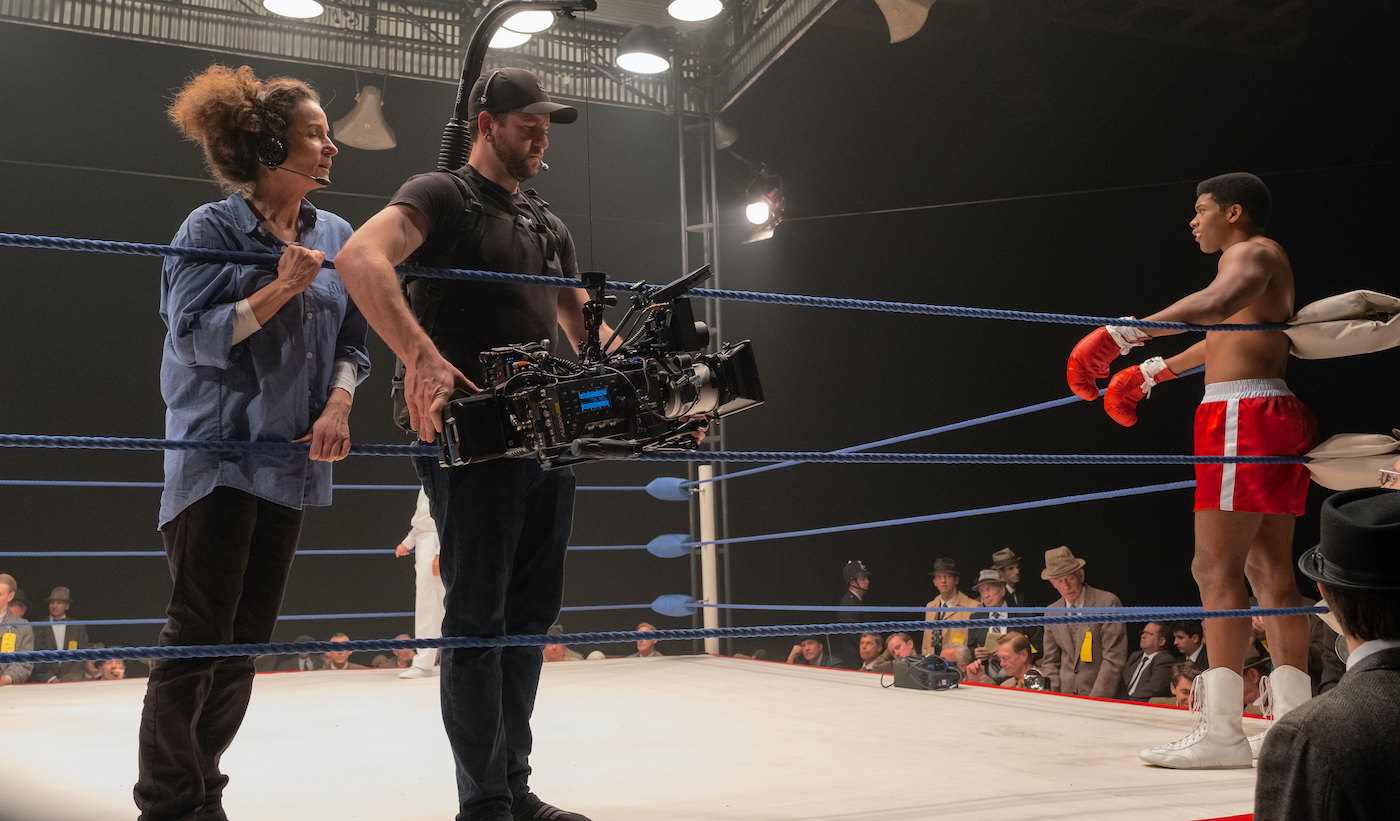
Though Miami is based on a stage play, the 1960s play-out continuously in the film, including in Malcolm X’s family home and at a Sam Cooke concert in Boston. For Production Designer Barry Robison, recreating these locations wasn’t necessarily difficult, given the wealth of visual archival material. But he still kept a meticulous eye on bringing King’s vision to life. “This is such an important piece of history,” Robison describes, “that I did not want to take many liberties. I knew if we were going to be faithful to the exact specifications of the motel room, that would be impossible to shoot in. Without over-scaling it, I suggested we increase the size of the walls incrementally.”
Robison laid out the markings on the floor in the art department and put up partitions so that King and Reiker could begin to feel the space, but the room was still going to be small. The Hampton House did have special rooms for special guests, so, Robison calculated, Malcolm X was given such a suite – he used the empty room off the main room to enlarge the space and give King more flexibility in blocking the actors.
The designer also used framing devices – doorways or archways, or a mid-century modern Japanese-style screen on a track so Reiker could close the space down or open it up. He had fly walls for Reiker to get longer lensing and more depth into the room, and added camera ports – windows cut into the wall and covered by a photograph or a painting. All of these created different challenges for Chief Lighting Technician Allen Parks, who says “the ceilings were very low and dressed to look like concrete. The art department helped us out by leaving the center ceiling panels open for lighting; and given the need for low-profile lights, we chose Astera Titan and Helios tubes in dual tube holders with Honeycrate fabric grids.”
Parks rigged the tube arrays into the ceiling in each corner of the hotel bedroom set. Reiker also requested baby scoop lights with snoots, so Parks built four 10-inch disc-shaped units with LiteGear bi-color LED’s, 1/4 CTS, and Magic Cloth diffusion. They were contained by 18-inch black corrugated plastic snoots and plastic honeycomb grids, which allowed Parks’ team to throw a tight fill light on the cast members without overexposing the surrounding set. “Those lights, strategically placed along with some LiteGear LiteMats and KinoFlo Freestyle LED fixtures,” Parks adds, “allowed the actors and camera to move freely through the set during lengthy and emotional takes.”
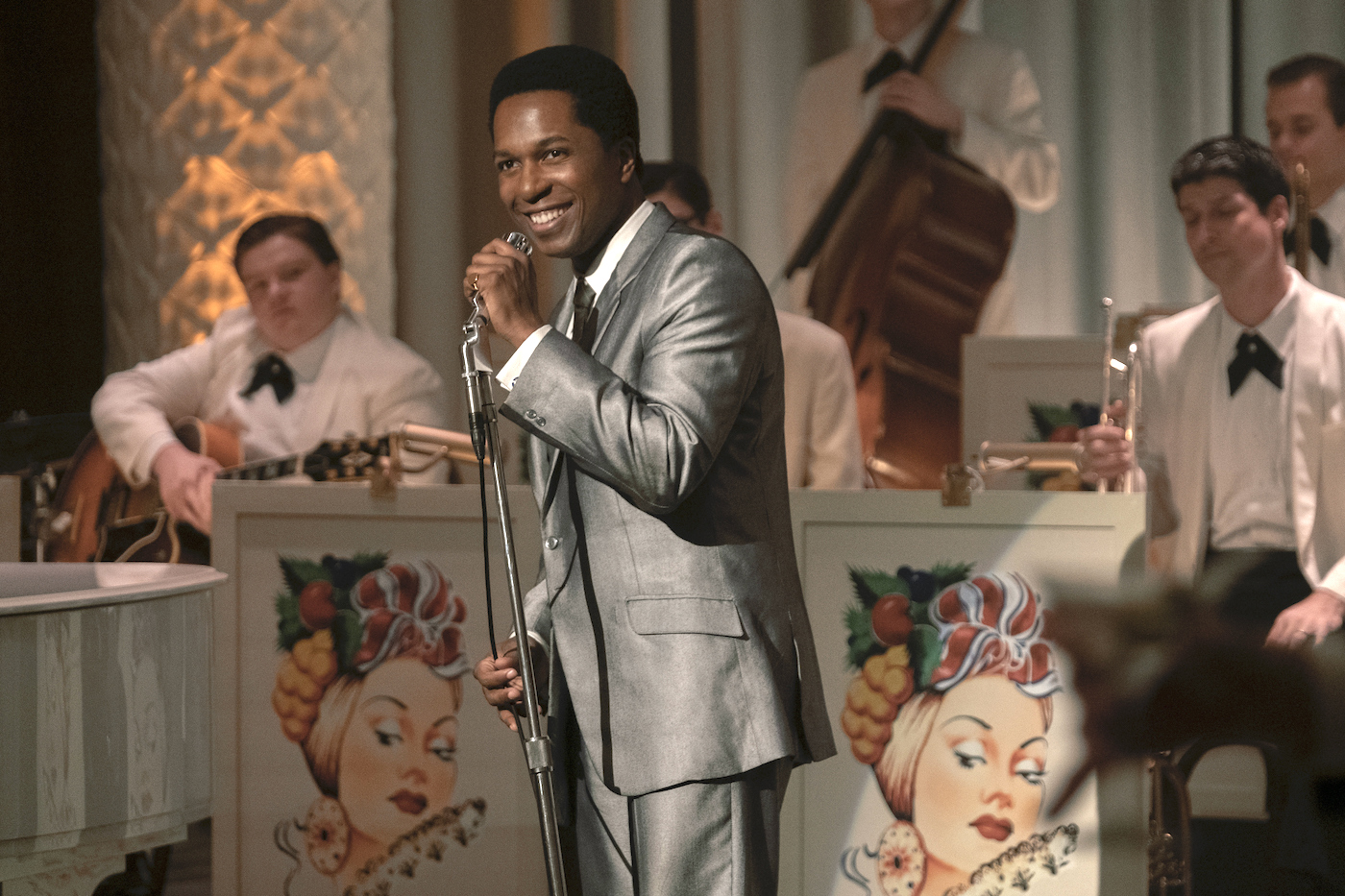
Reiker worked closely with Robison and Costume Designer Francine Jamison-Tanchuck to create a palette of vibrant blues, greens and warm tones throughout the story. As Light Iron Supervising Colorist Ian Vertovec recalls: “I worked with Tami to bring out depth and shape to complement the complex choreography established between the actors’ blocking and the camera movement.”
Many crucial scenes shot outside of the motel room were shot in LaPlace, Louisiana, and at Second Line Stages in New Orleans. Robison found a hotel an hour outside of the city that suited the motel’s exterior hallways, dining space, the phone booth in the parking lot, and the pool. For Cooke’s Boston concert and an existing club for the Copacabana, both of which only needed surface changes to make them period-correct, a French Quarter theater was used. For a tense, nine-minute rooftop scene, Robison came up with a unique solution.
“Regina and I wanted to shoot outside at night,” Reiker recounts. “And we did not want to shoot on a green screen. But every roof we scouted, the actors would have to have been on wires because of safety. Barry came up with this genius idea to build the roof on shipping containers right outside the sound stage. We were outside the city, so there was nothing around it, and we had 280 degrees of total darkness. I put little pinpoints of light all around – from a few hundred yards away to a quarter-mile away – to help recreate the Miami skyline, so you felt the life out there. VFX added buildings and fireworks in post.”
Clay’s boxing fights took place in an arena built on the soundstage. They were recreated faithfully with the help of the Taschen book GOAT (Greatest of All Time): A Tribute to Mohammad Ali, which chronicles Muhammad Ali’s career, and which Reiker describes as their Bible for those scenes. Parks carefully studied the Taschen book, recreating a period lighting grid, including the same 1K scoops.
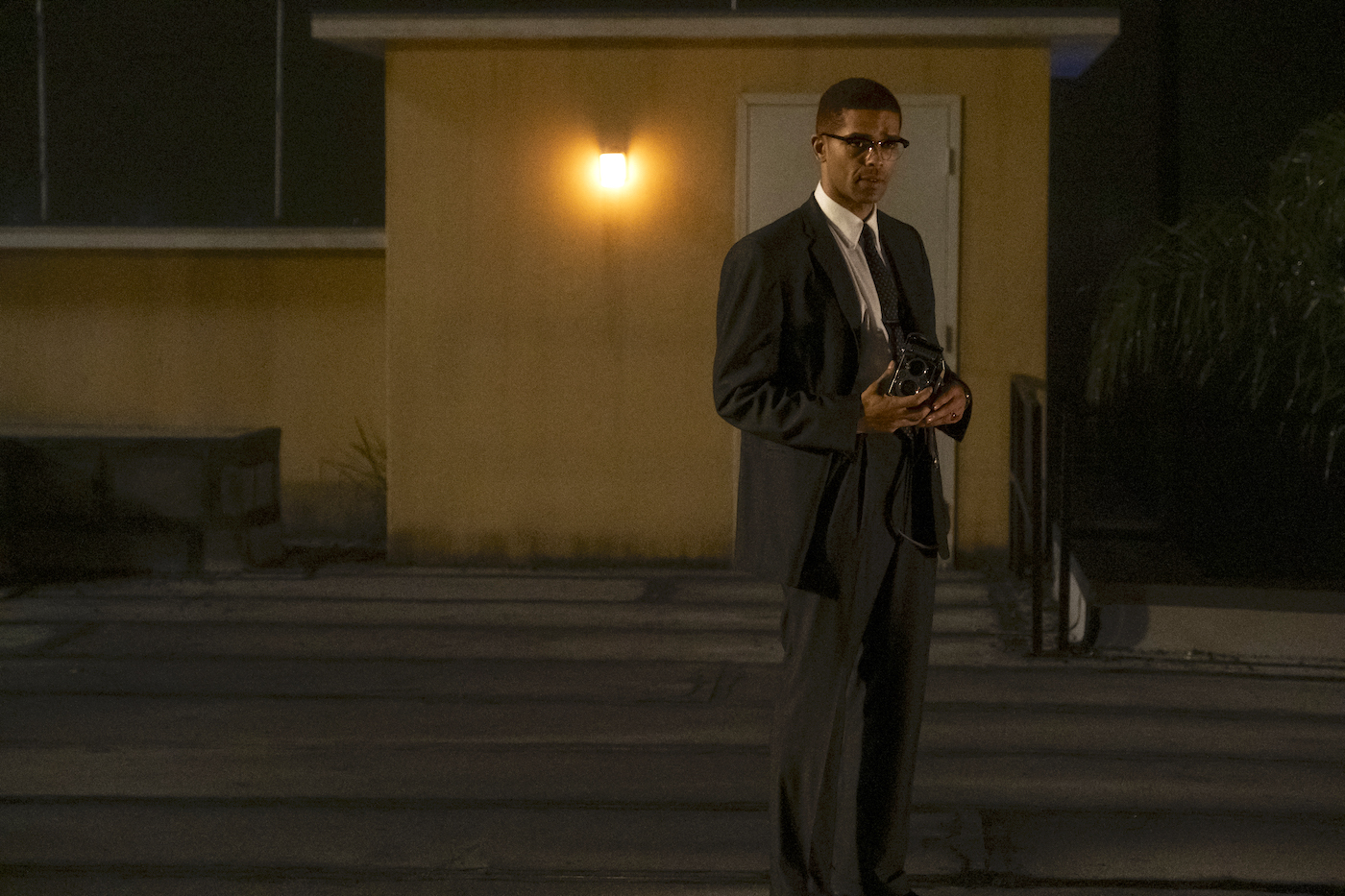
“In the photos of the fight,” Parks describes, “the lighting rig appears to contain randomly placed scoop lights, but upon further examination, we were able to discern a patterned plot. The set decorators were a major help with research and drafting plans. Sourcing the period scoop lights –18-inch Altman 1K Scoops – was surprisingly easy since MBS Equipment Company happened to have 30 or so gathering dust in Burbank. We also employed some vintage MoleRichardson 12-inch 2K studio Fresnels from them, too.”
Pulling focus for the fight scenes was no easy task for Brandes, as Reiker’s “finding beauty in the moment” approach did not change for handheld boxing scenes, with choreography and rehearsals. But Brandes’ skill in building up and breaking down the Alexa 65 (so that Chamberlain and Alward had a maximum comfort level) was a boon to the Guild camera team.
“I think initially Chad thought the camera would be on his shoulder and he’d shoot it from up high, like the human-head perspective,” Brandes relates. “But as we got into shooting, everyone agreed it made more sense to bring the camera down lower so that you were in with the action. This meant Chad was cradling [the ALEXA] a lot, which gave him a bit more stability. But it also meant I was constantly adjusting the build – shape handles, easy rigs, no easy rigs, no handles – just sort of building it so you could fire it like it was a machine gun with one handle. The Alexa 65 is fairly large, so my goal was to get it as comfortable and maneuverable as possible, and to not have things get in the way, like the Teradek or the MDR, which can get so hot they could burn an arm.”
As for King’s feature directing debut, those who assumed adapting a stage play to the screen would be a tough ask were right. But as King concludes, “I could not not do this film. I was very much aware of what I was getting myself into,” she shares. “And at the end of the day, someone’s always going to say that it feels like a play. But I would challenge those people to go and read the play, and they will see that Tami and the camera crew did an exceptional job of keeping just enough energy in the images to not distract from Kemp’s hard-hitting dialogue, which is, of course, the essence of the film.”
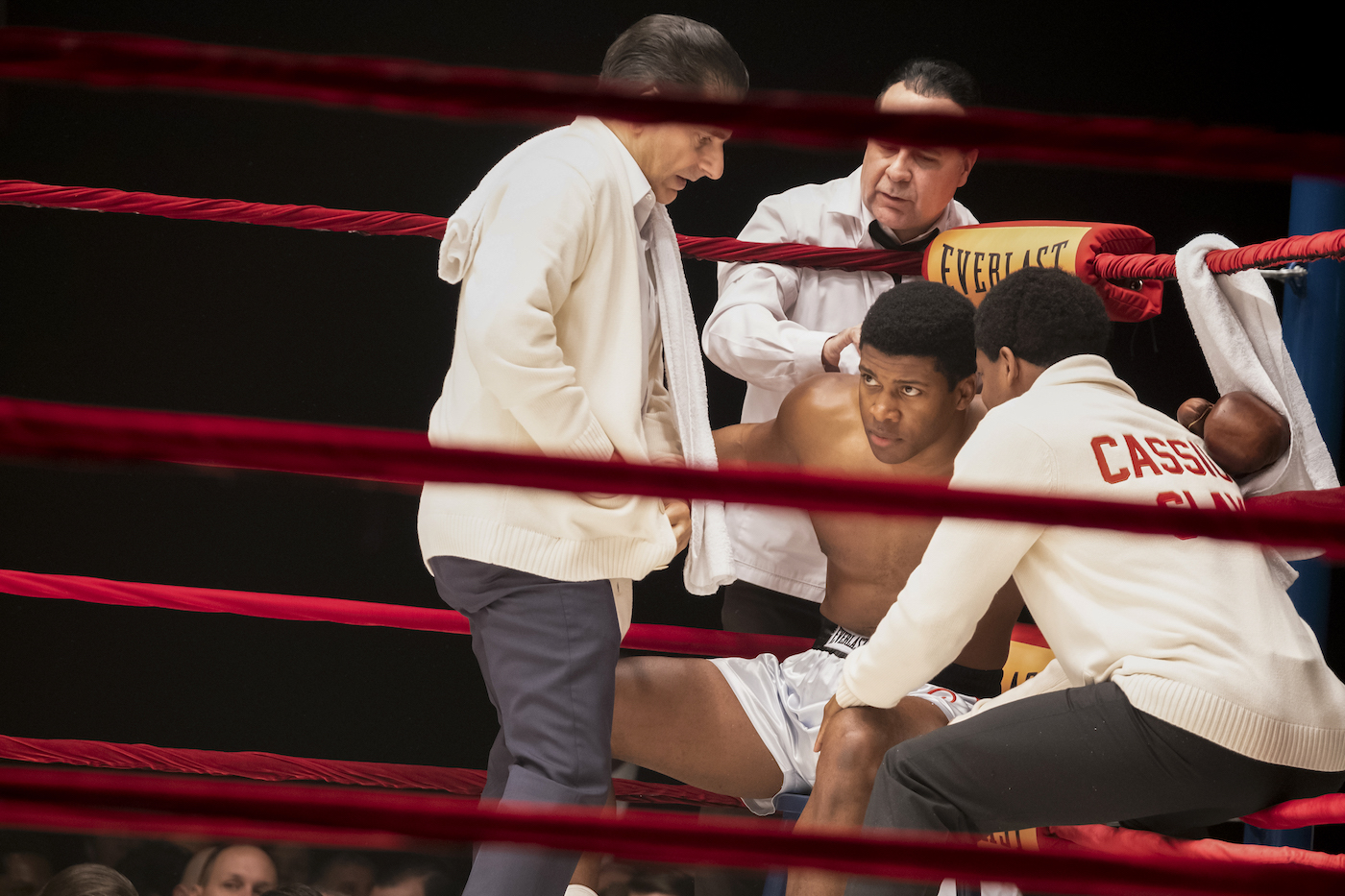
Local 600 Camera Team – One Night In Miami
Director of Photography: Tami Reiker, ASC
A-Camera Operator: Chad Chamberlain, SOC
A-Camera 1st AC: Sarah Brandes
A-Camera 2nd AC: Sienna Pinderhughes
B-Camera Operator: Austin Alward
B-Camera 1st AC: Zach Blosser
B-Camera 2nd AC: Haley Turk
Loader: Ben Maner
DIT: Tyler Blackwell
Still Photographer: Patti Perret
